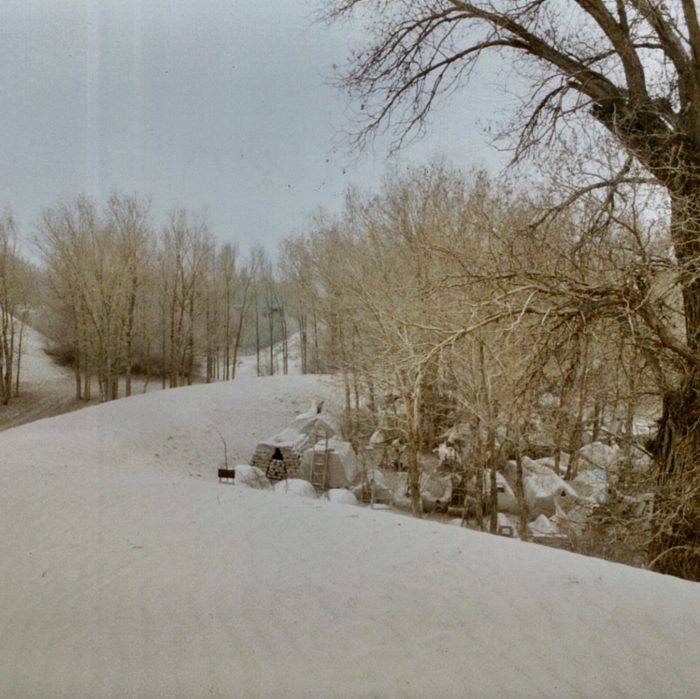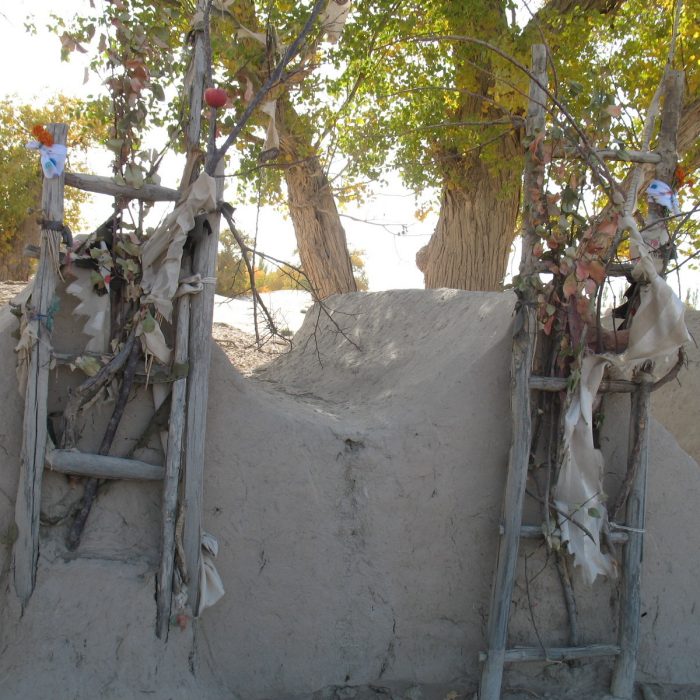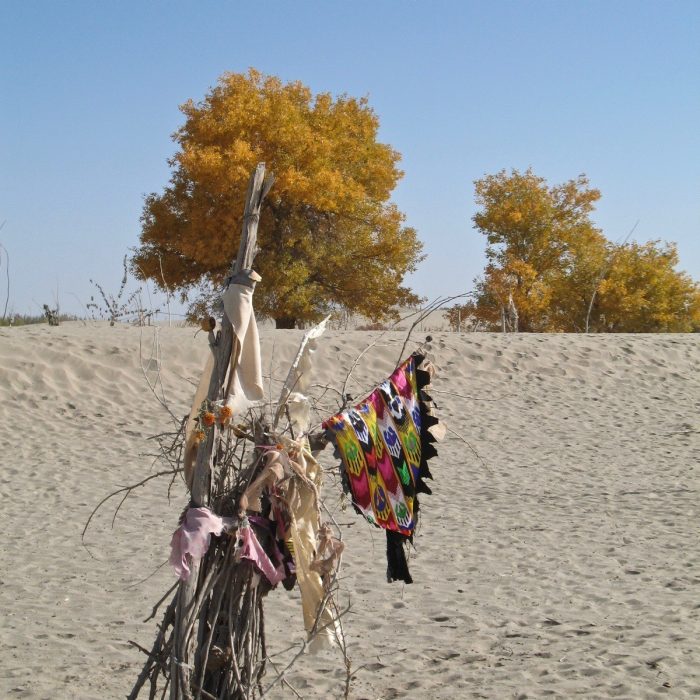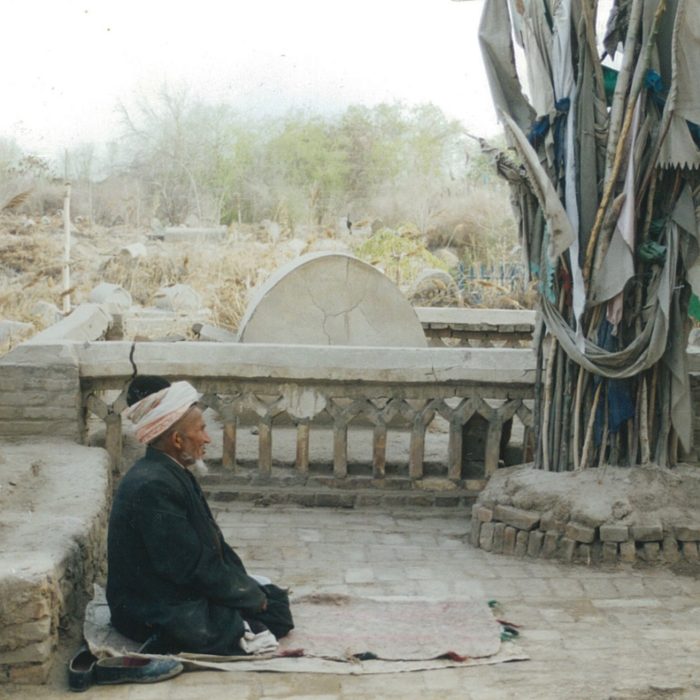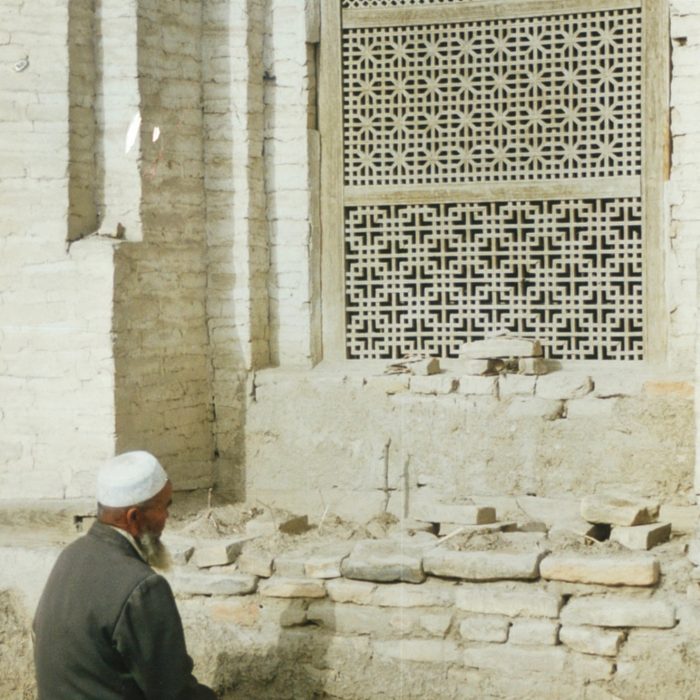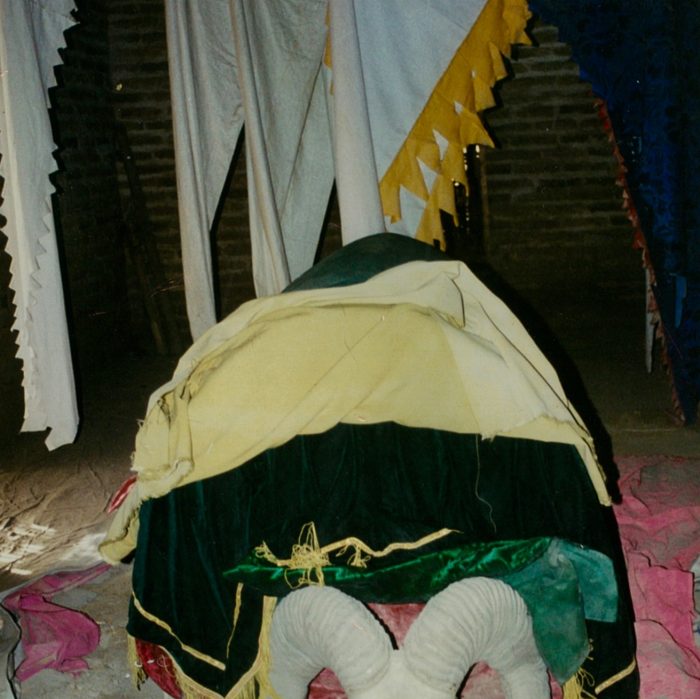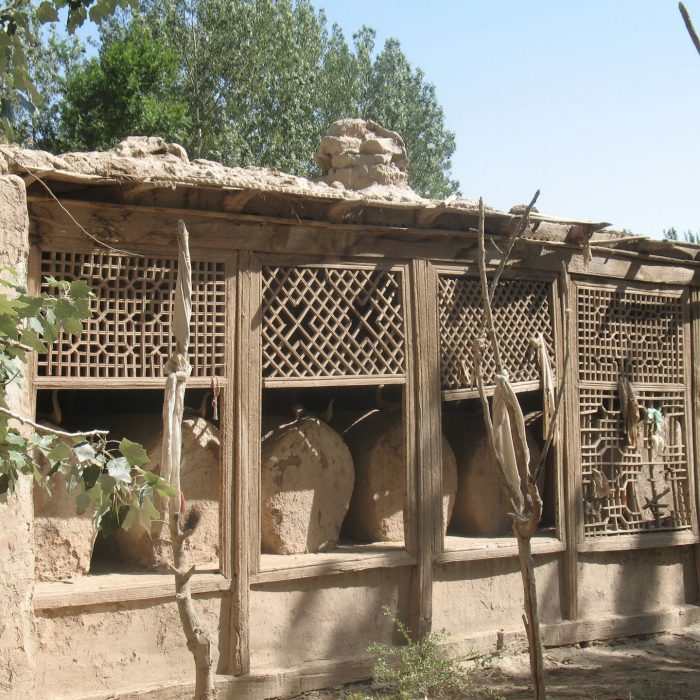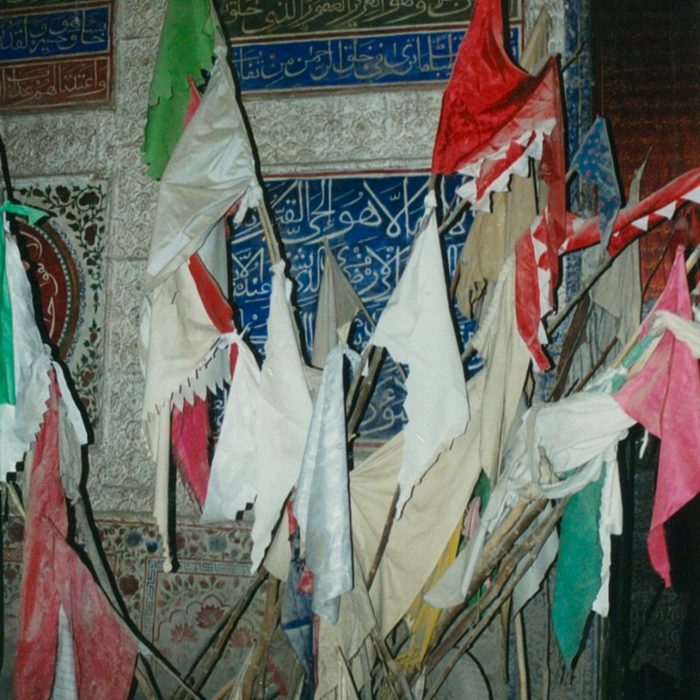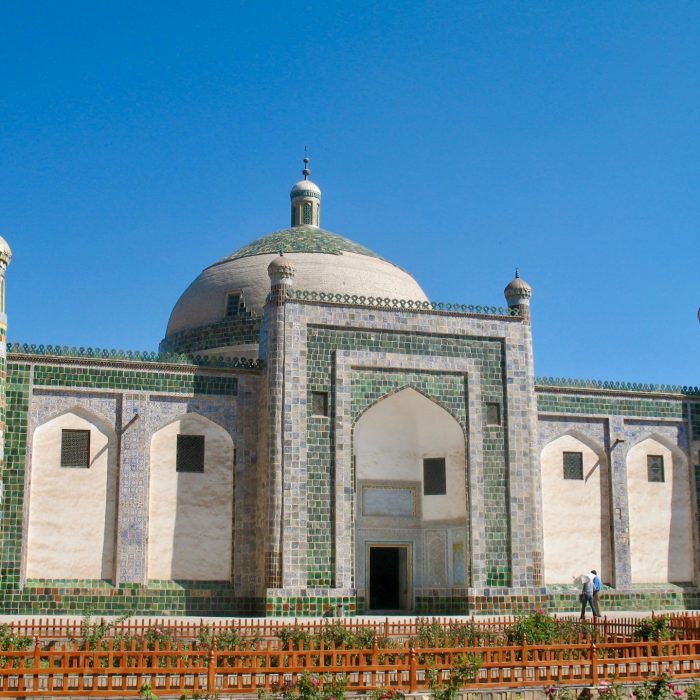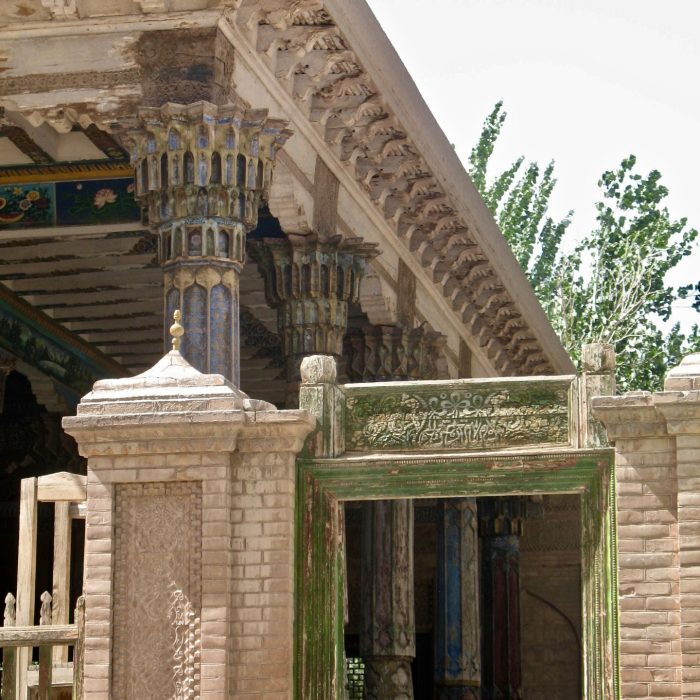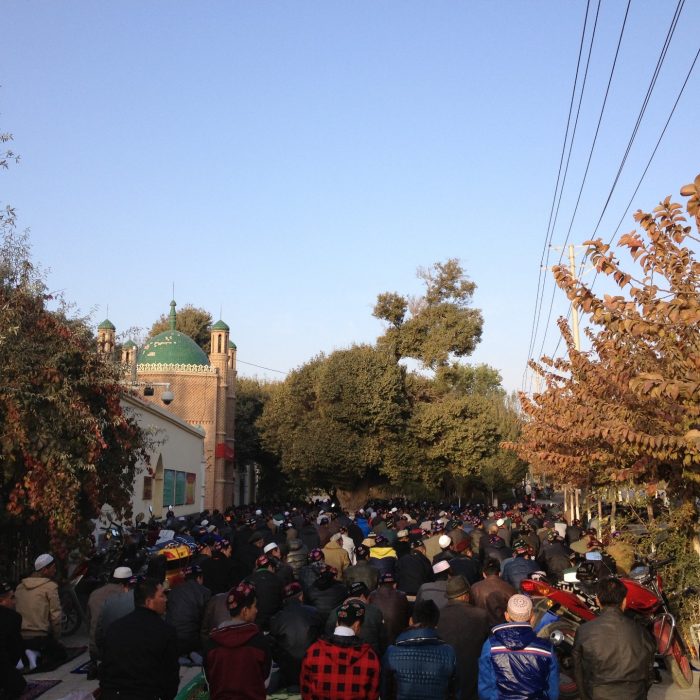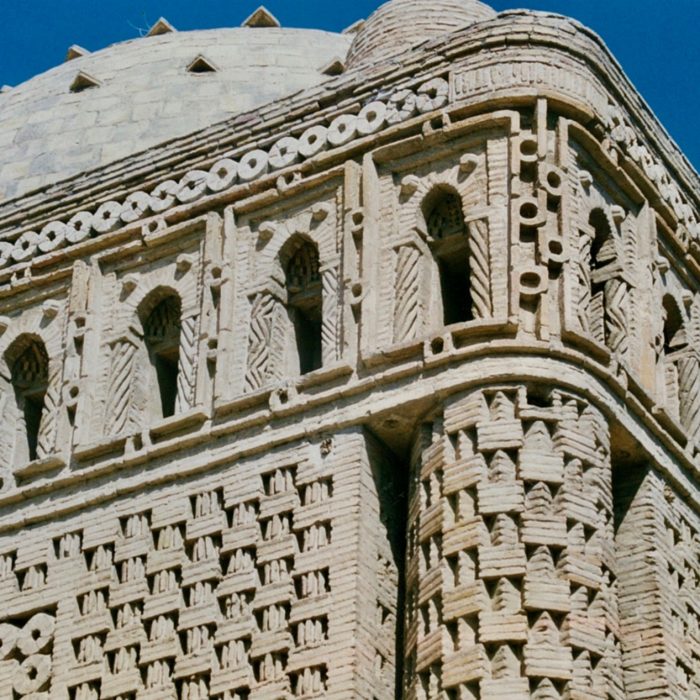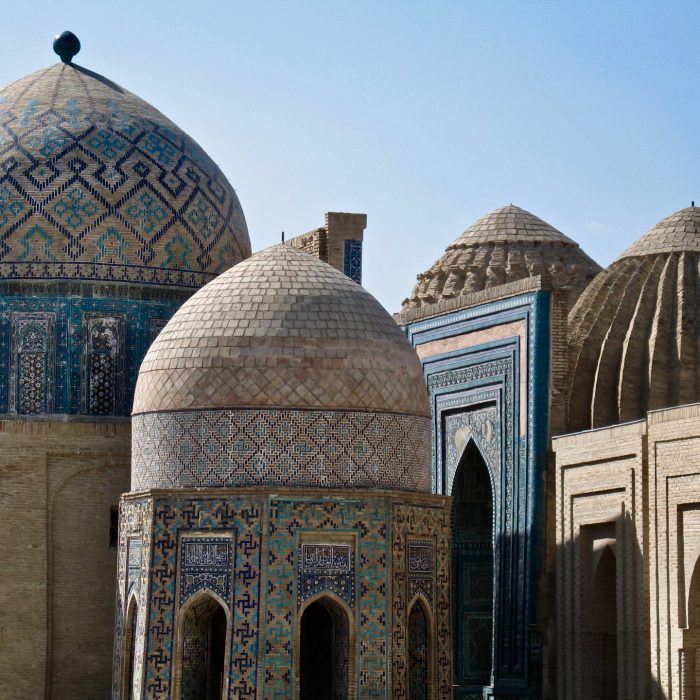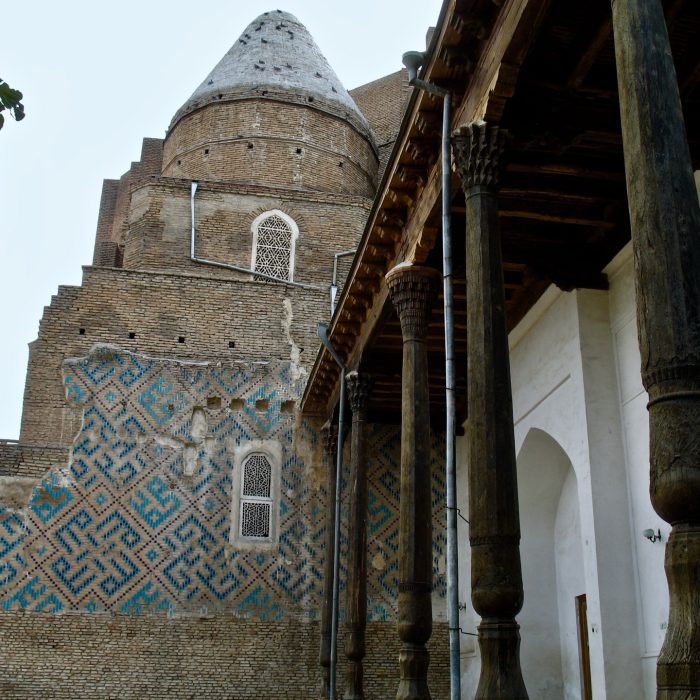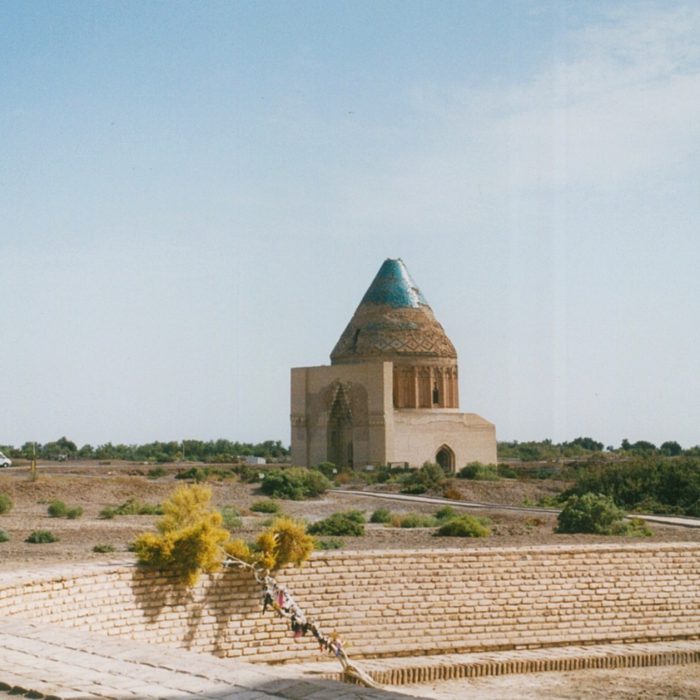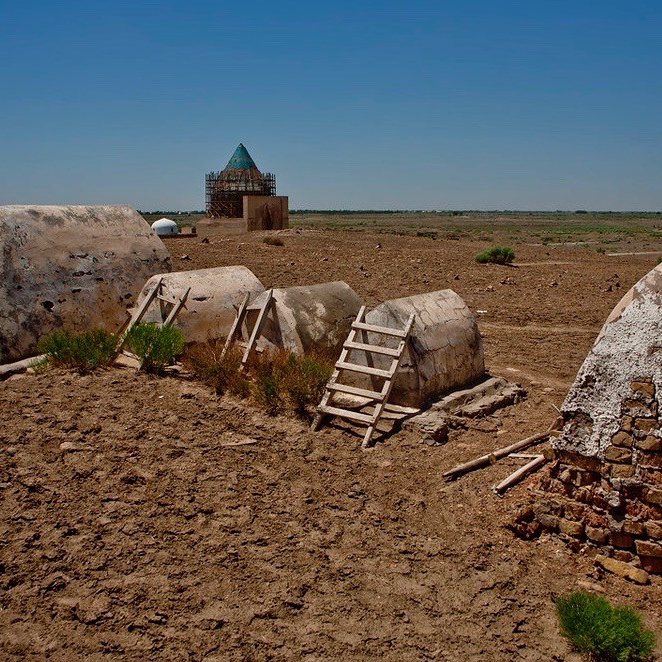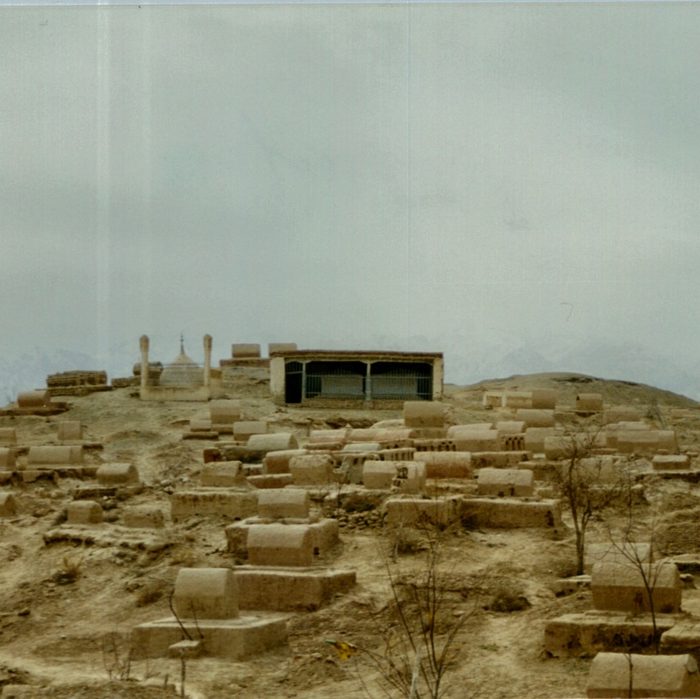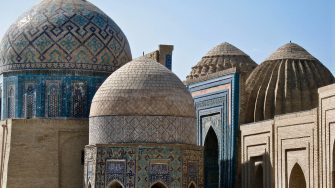
Mazar/Ziyarat
Some of the enduring features of the Islamic religious landscape along the Silk Road are mazar, or ziyarat, the sacred sites that are believed to be the resting places of saints, kings, or prominent religious and intellectual figures. As the destination of localised pilgrimages, the physical representation of a mazar can range from a majestic complex of a mosque, madrasah, courtyard, garden and mausoleum, to a dirt mound or even just an erected pole. Mazar visitation features rituals related to veneration and prayers for a specific purpose such as fertility, a cure for a disease, or collective calls to avert a natural disaster. Other aspects of the pilgrimage may include singing, dancing, socialising, entertainment, market, and preparation and mass consumption of the memorial feasts at the site. Some mazars’ sacred standing is so prominent that they are visited multiple times in lieu of the Hajj Pilgrimage to Mecca, especially by those who do not have the physical or financial means to fulfil this pillar of Islam—one of five including profession of faith, prayer, alms-giving, fasting and pilgrimage. These prominent shrines are characterised by prayer flags, ribbons, ram horns, and sometimes oil lamps. Such symbolisms are also a testimony to the composite and hybrid nature of people’s Islamic practices along the Silk Road, as they assimilated elements from other religions such as Shamanism, Zoroastrianism, Manicheanism, and Buddhism.
All photo credits to Silk Roads@UNSW unless specified otherwise.
-
- Exnerová, V. (2015). The Veneration and Visitation of the Graves of Saints in Soviet Central Asia. Insights from the Southern Ferghana Valley, Uzbekistan. Archiv Orientalni, 83(3), 501–III,601.
- Harris, R., & Dawut, R. (2002). Mazar festivals of the Uyghurs: Music, Islam and the Chinese State. British Journal of Ethnomusicology, 11(1), 101–118.
- Iloliev, A. (2008). Popular culture and religious metaphor: saints and shrines in Wakhan region of Tajikistan. Central Asian Survey, 27(1), 59–73.
- Kehl-Bodrogi, K. (2006). Who owns the shrine? Competing meanings and authorities at a pilgrimage site in Khorezm1. Central Asian Survey: POST-SOVIET ISLAM: AN ANTHROPOLOGICAL PERSPECTIVE, 25(3), 235–250.
- Mehdi, E. (2016). Shrine Pilgrimage (Ziyarat) in Turco-Iranian Cultural Regions. International Journal of Religious Tourism and Pilgrimage, l(1).
- Dawut, R. (2001). Mazars of the Uyghurs. Urumchi: Xinjiang People’s Publishing House.
- Dawut, R., Mehendale, S., & Papas, A.(2012). Desert Mazâr: Sacred Sites in Western China (Essay to Accompany Photo Essay). Cross-Currents (Honolulu, Hawaii), 3.
- Ross, L., Citron, B., Dawut, R., & Papas, A. (2013). Living shrines of Uyghur China (1st ed.). New York: The Monacelli Press.
- Ruffle, K. (2006). Muslim Saints of South Asia: The Eleventh to Fifteenth Centuries [Review of Muslim Saints of South Asia: The Eleventh to Fifteenth Centuries]. The Journal of Asian Studies, 65(2), 450–452. Cambridge University Press.
- Sugawara, J., & Dawut, R. (2016). Mazar : Studies on Islamic Sacred Sites in Central Eurasia. Fuchu, Tokyo: Tokyo University of Foreign Studies Press.
- Thum, R. (2012). Beyond resistance and nationalism: local history and the case of Afaq Khoja. Central Asian Survey: LOCAL HISTORY AS AN IDENTITY DISCIPLINE, 31(3), 293–310.
- Thum, R. (2014). The sacred routes of Uyghur history. Cambridge, Massachusetts: Harvard University Press.
- Thum, R. (2020, August 24). The Spatial Cleansing of Xinjiang: Mazar Desecration in Context. Made in China Journal. Retrieved from https://madeinchinajournal.com/2020/08/24/the-spatial-cleansing-of-xinjiang-mazar-desecration-in-context/



